What are we automating in marketing and martech in 2022, and who is automating it?

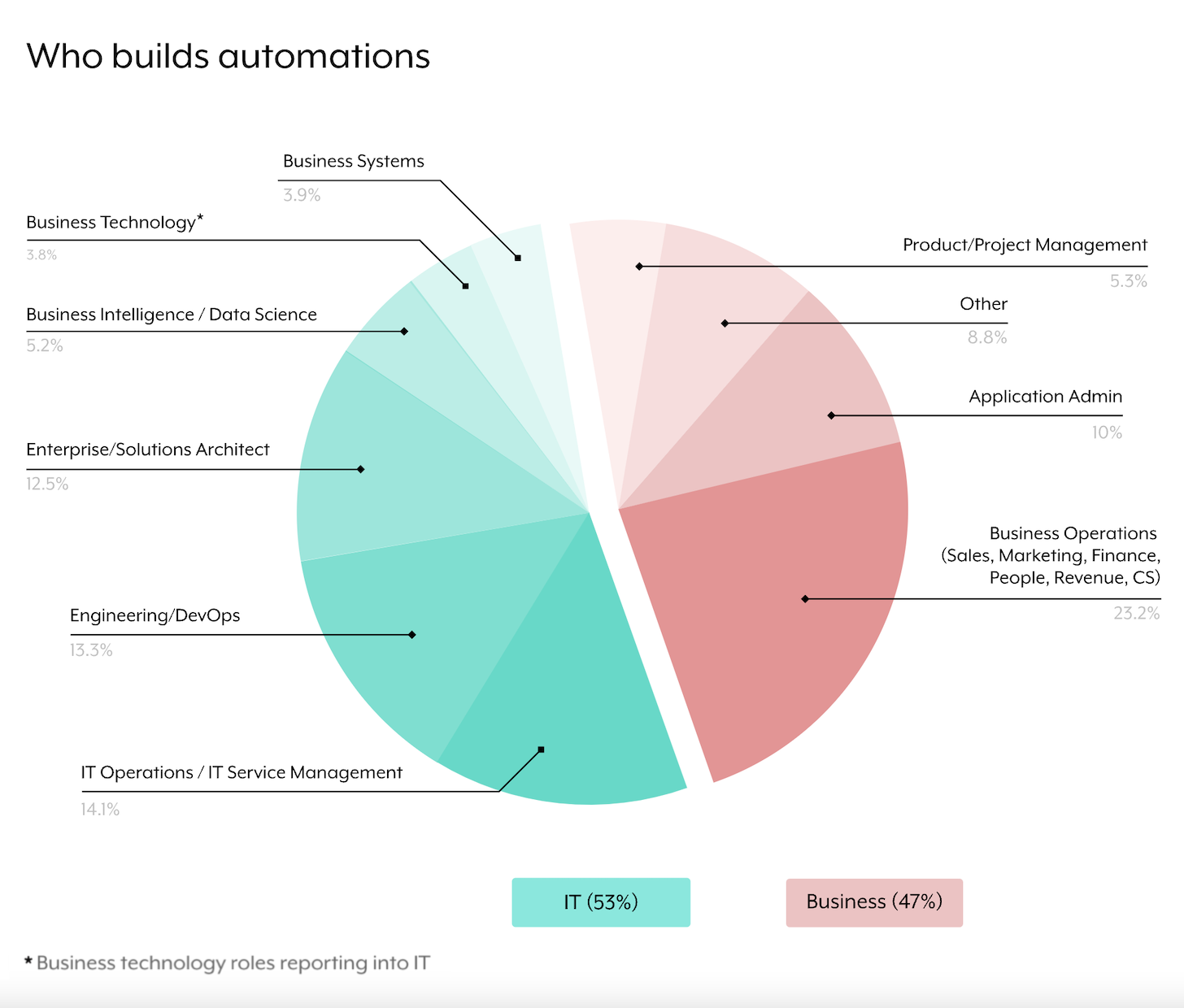
Apologies for the lull in submitting. I took a long, much-necessary family members holiday — nearly solely electronic-absolutely free. I’m now back in the saddle, recharged and reenergized about all that’s going on in martech. With a substantial backlog of interesting items to share with you.
Here’s the first…
Enterprise automation firm Workato (disclosure: I’m an advisor to them) not too long ago launched their 2022 Operate Automation Index. It is not a study, but rather the aggregated facts from 900 of their midsize and business buyers from February 2021 to January 2022.
In other terms, it’s the ground truth of the matter of what a very big sample of organizations are truly automating. Really hard empirical data, not tender biased views.
The to start with discovering that leaped out to me is the chart at the major of this article. Practically fifty percent (47%) of automations made on their system ended up designed by enterprise consumers — not IT or engineering industry experts.
This is about as resounding of an endorsement of the adoption of “no code” and decentralized technology enablement as a single could inquire for — all the a lot more so simply because Workato’s shoppers are typically massive enterprises with potent IT departments, not scrappy, remarkably-fluid startups.
I appreciate scrappy, remarkably-fluid startups, which have been the major end users of most “no code” platforms. But they typically have a great deal extra freedom in how they hustle than an established company. Some people have argued that this sort of no-code, decentralized empowerment of non-IT execs would not work in a greater business with official IT governance. This info from Workato really strongly rebuts that argument.
Indeed, it’s the burgeoning category of non-IT “business operations” professionals — advertising ops, income ops, earnings ops, CS ops, and many others. — who are collectively making the premier variety of automations (23.2%). Huge Ops is flourishing! This is in no little aspect due to the fact Huge Ops groups enable greater companies adapt with the sort of agility employed by scrappy, very-fluid startup competitors who are seeking to disrupt them.
This isn’t just a marketing ops thing both.
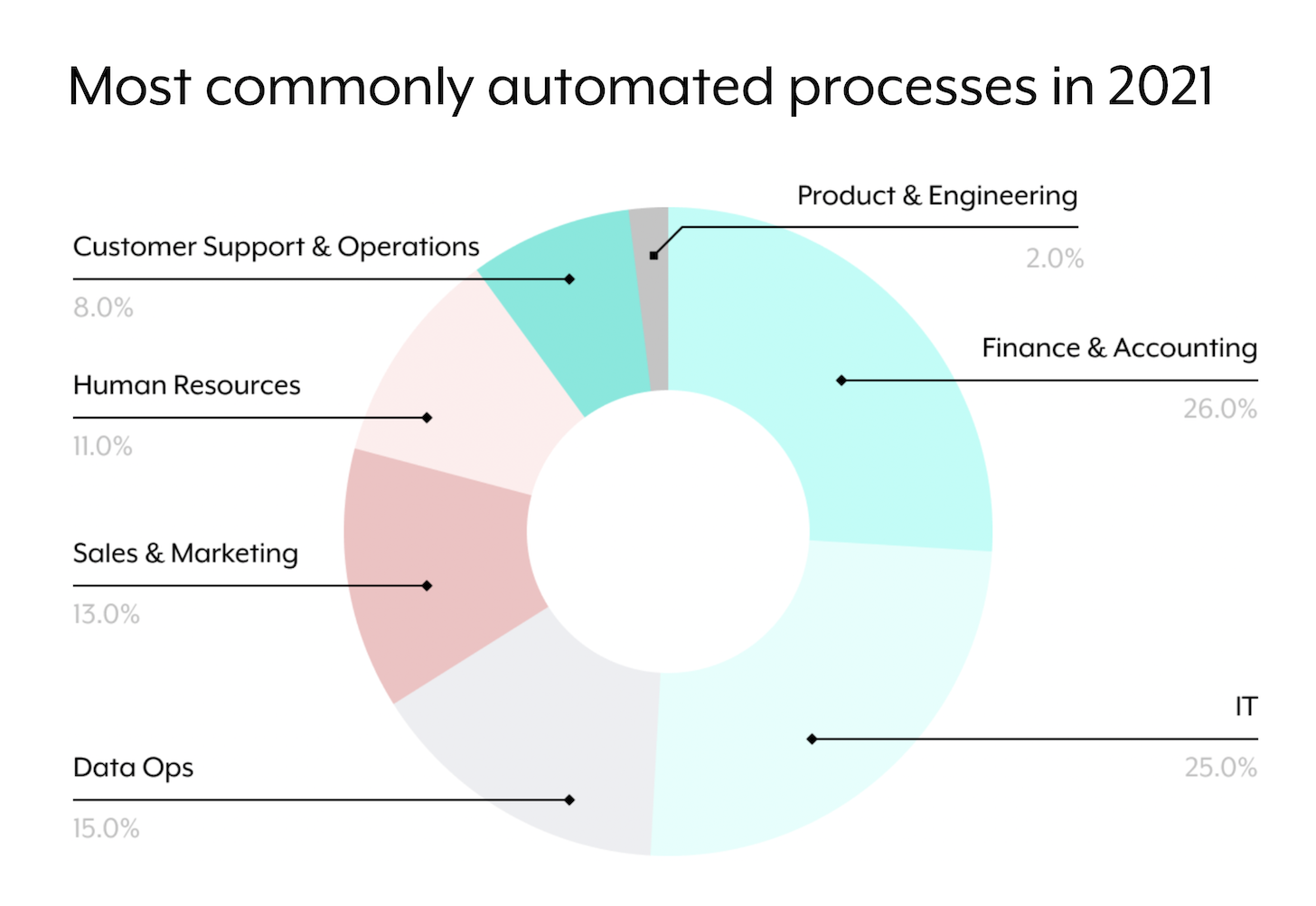
In fact, marketing and sales rank third in the departments leveraging automation. The major range of automated procedures in this index were for finance and accounting (26%). Sales and promoting had 50 % as quite a few (13%).
(Granted, this may well be since Workato exclusively has more adoption inside of finance and accounting, as perfectly as IT. If you issue in all the automations that advertising ops and product sales ops use in their CRMs and MAPs, they probably have far more full automations. But the level is that this proliferation of business automation is not unique to advertising and marketing and product sales.)
So what are advertising and marketing ops professionals automating? Below are the superior-level clusters:
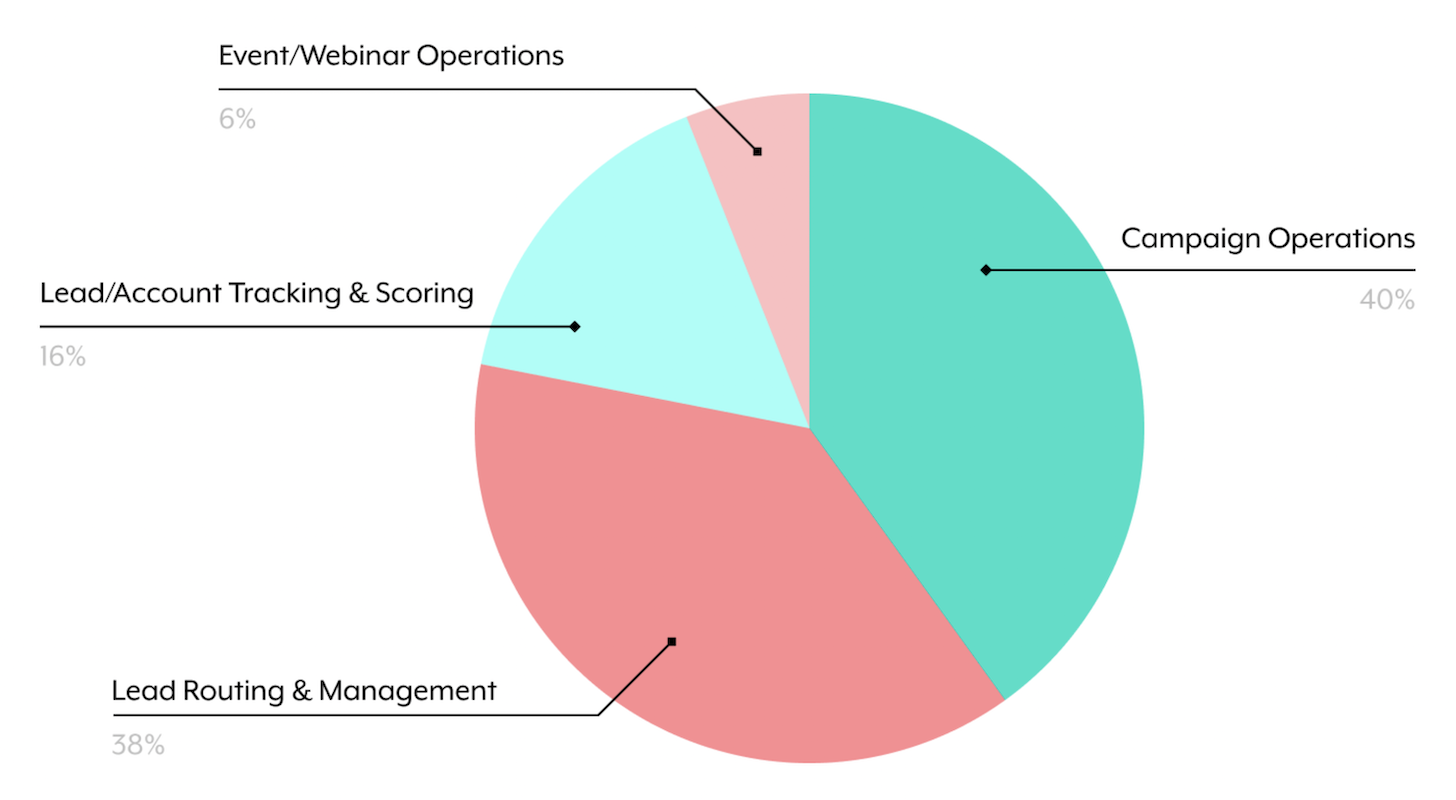
If marketing campaign functions appears a little way too vague, Workato describes what is included:
“Everything in a campaign not connected to potential customers, such as artistic & duplicate approvals, file storage, and capturing general performance knowledge. It may well mean connecting CRM techniques, advertising and marketing apps, and venture management tools, allowing groups to approach, execute, and evaluate the impact of campaigns. Automating marketing campaign execution processes aids imaginative means prevent facts entry and campaign leaders clear away manual measures from reporting.”
Curious about marketing ops’ cousins in product sales ops and what they’re automating?
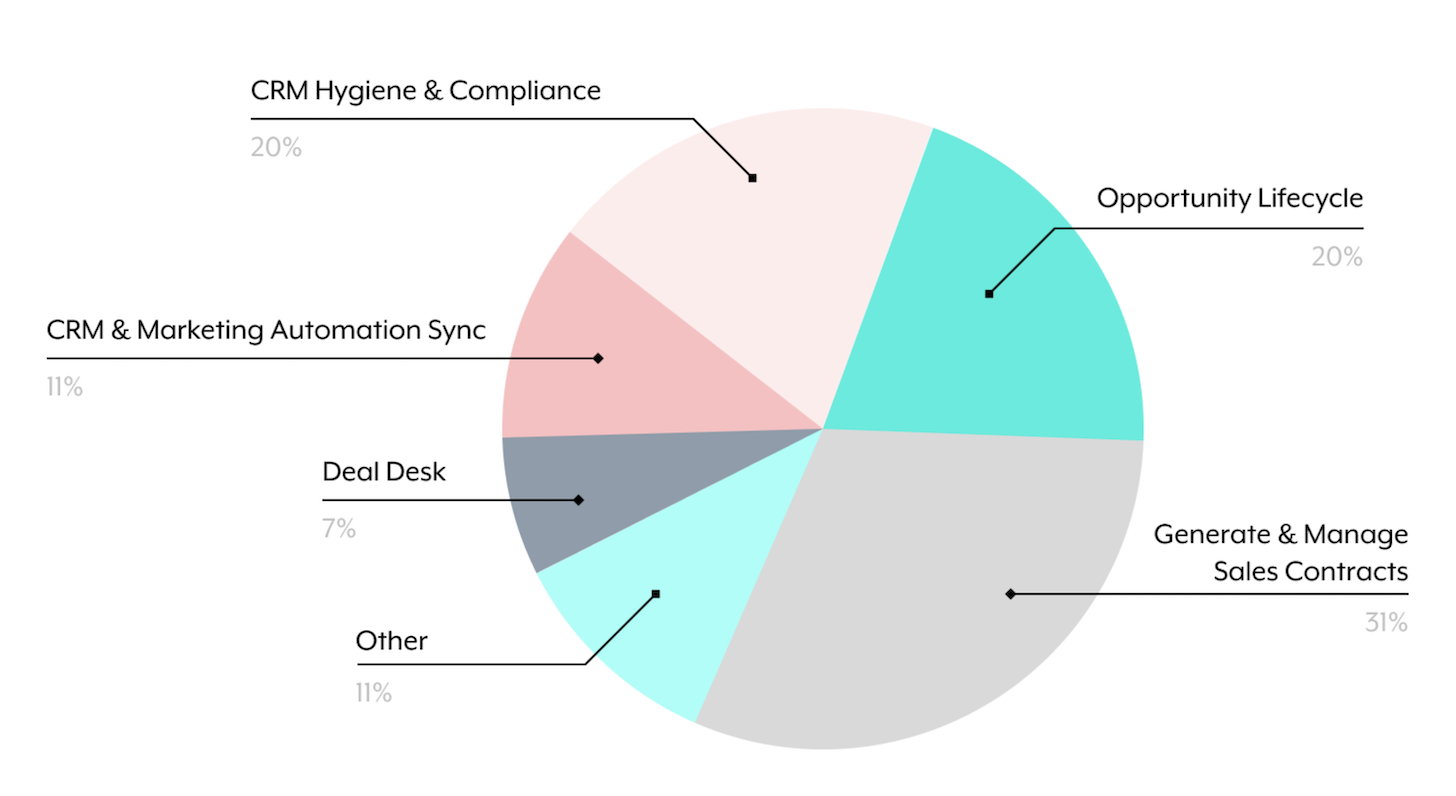
(I suspect that in a ton of companies, a lot of of these “sales” automations are getting operate — or at minimum co-managed — by the marketing ops workforce. Or, in these organizations who have a put together revenue ops functionality, these neatly mix together under that umbrella.)
To close complete circle, here’s one particular additional interesting stat from this report:
Even though throughout the whole company 47% of automations had been built by business enterprise consumers (as a substitute of IT), in internet marketing and product sales that percentage jumped to 70%.
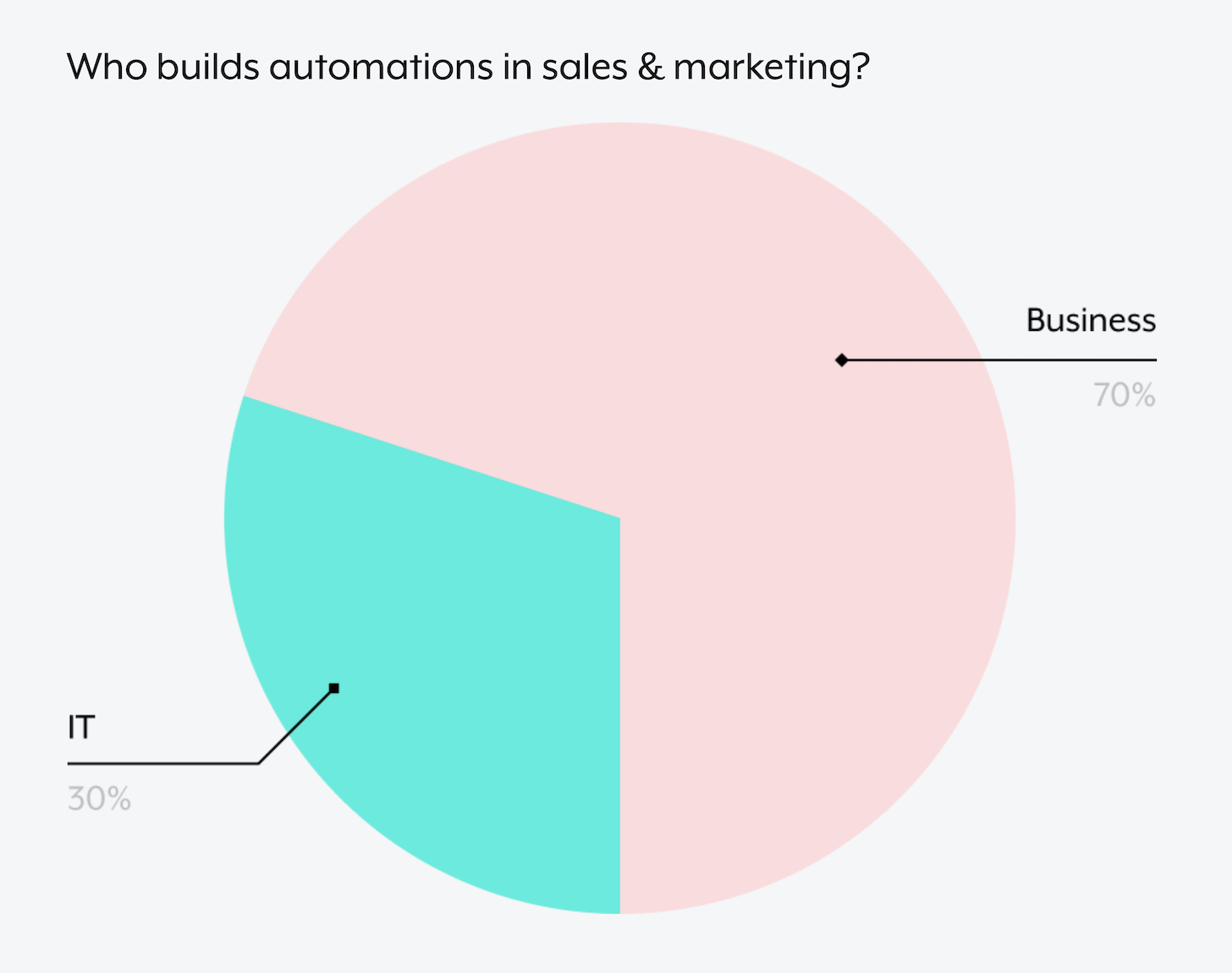
Which is one of the optimum ratios of company-user builders to IT builders of any section — with the exception of purchaser achievement, wherever 72% of the automations are developed by small business buyers: hand-offs from profits to client good results, consumer onboarding and training workflows, automated customer experience and NPS surveys, and many others.
Advertising and marketing, gross sales, client service: all teams where the processes staying automatic revolve all-around the consumer journey and count closely on the area knowledge of ops leaders embedded within individuals departments.
This is Huge Ops incarnate.








